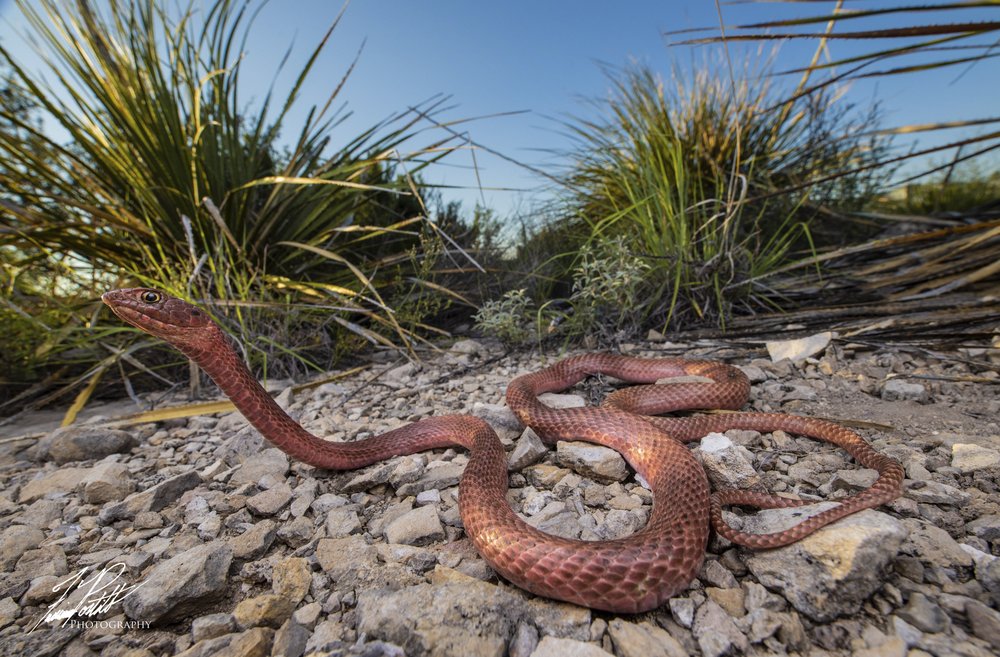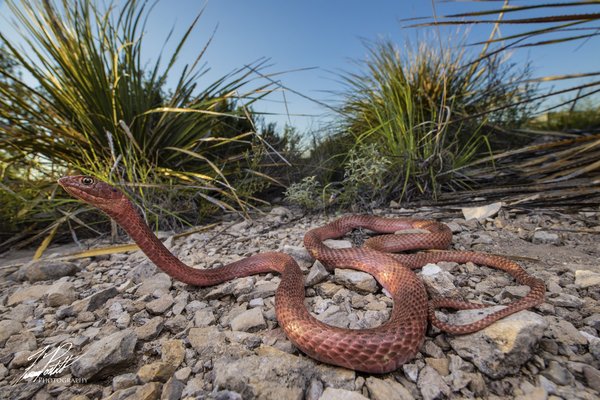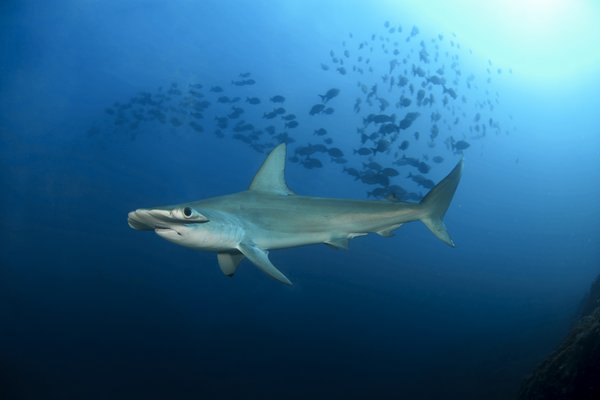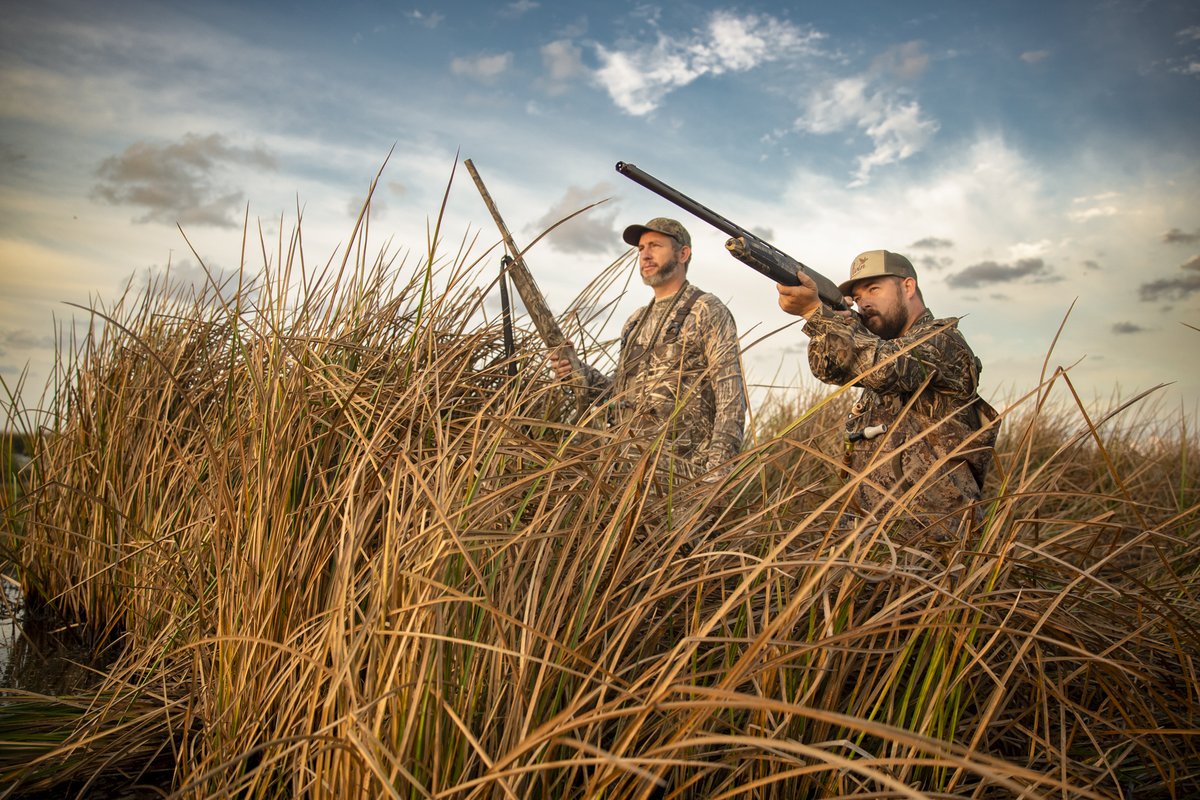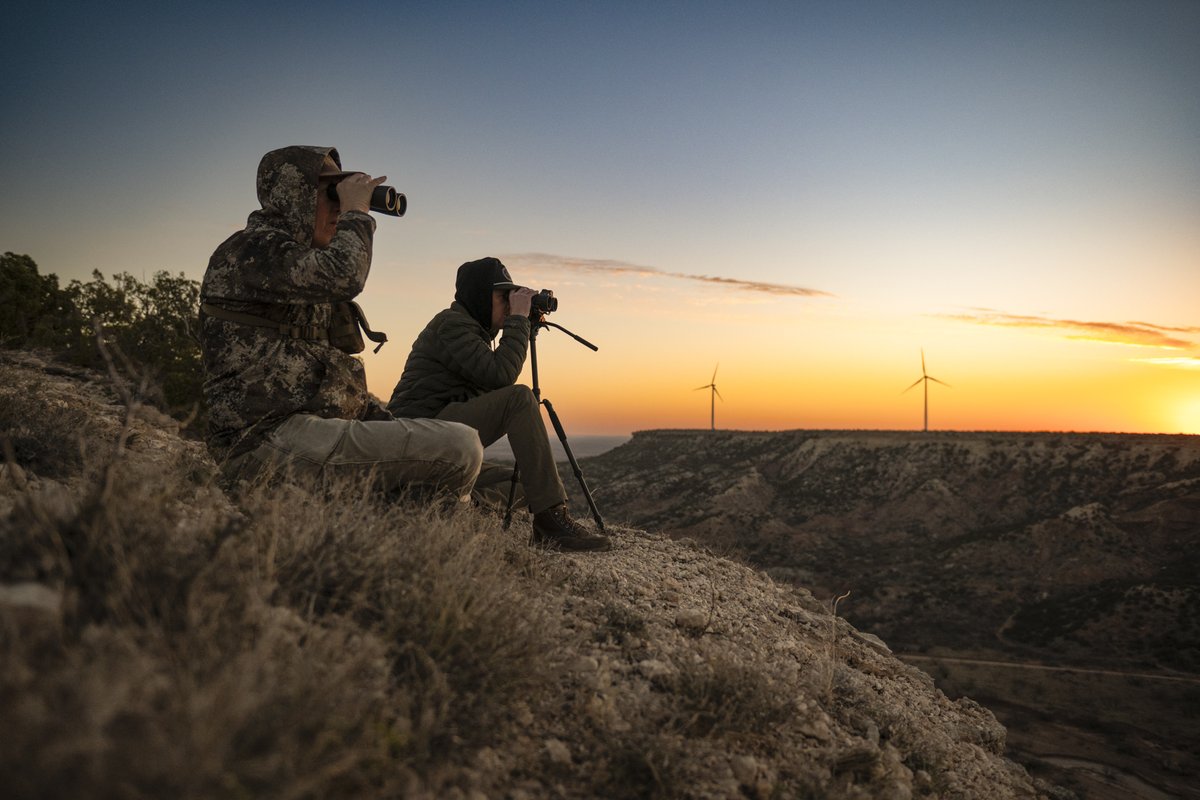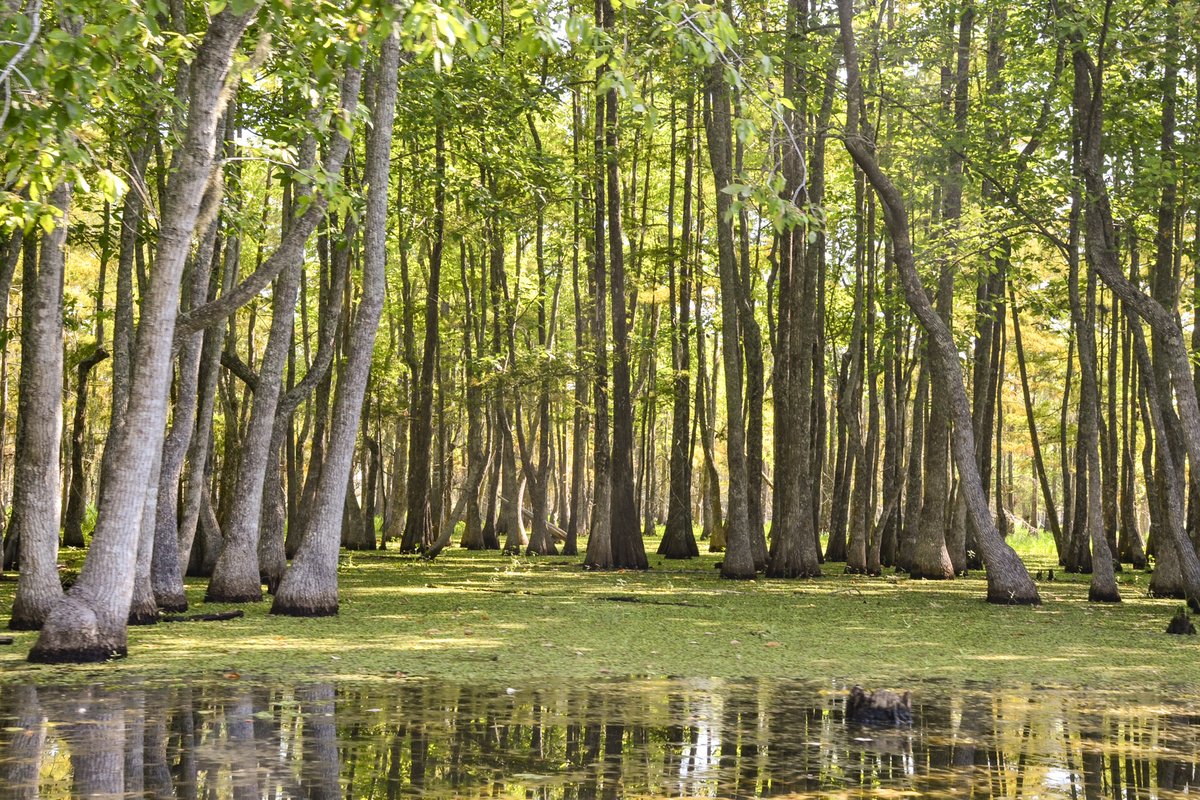A crimson serpent slides its way through a maze of cacti and across the dusty earth of the Terlingua ghost town.
He raises his ruby head above swaying grasses to assess a nearby lizard before quietly lowering back to the cracked ground. Despite the predator’s vibrant color, his victim may never see him coming.
Native to the southern U.S. and Mexico, the western coachwhip is found predominantly in Texas. It is a subspecies of the coachwhip, the fastest snake in North America. Coachwhips are known to reach speeds up to 4 mph and are sometimes referred to as red racers because of their pigment and speed.
A western coachwhip’s color ranges from shades of tan and brown to red. Those found west near Big Bend National Park tend to exhibit more pink and red hues, blending with the region’s scarlet clay.
Coachwhips are nonvenomous. Their bite can be quite painful, however. The snake will defend itself or penetrate its prey with serrated teeth and proceed to whip its head back and forth, causing a gnarly wound. That said, they generally won’t attack unless provoked.
Contoured scales highlight their unique braided-looking texture, resembling a whip. This feature, combined with their thrashing behavior when captured, has fueled the myth that these snakes can whip a person to death.
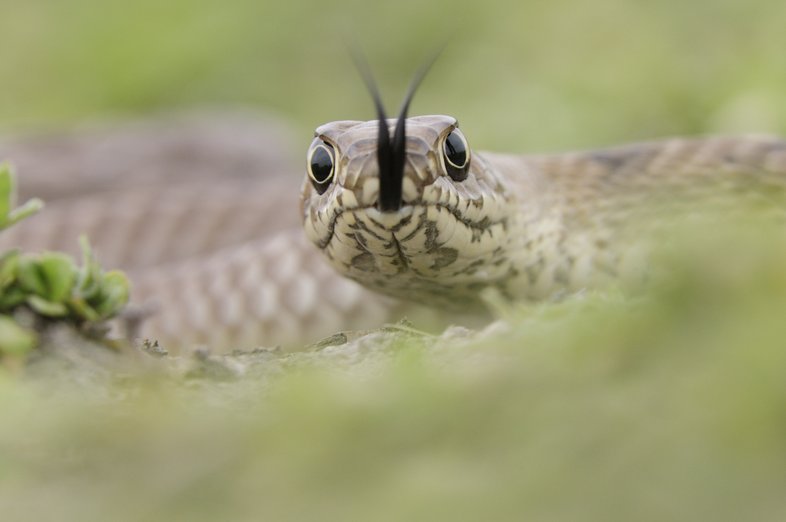

Rolf Nussbaumer / Minden Pictures
Rolf Nussbaumer / Minden Pictures
Coachwhips are skilled diurnal hunters (active during the day), stalking their prey even in the peak heat of the afternoon. Large, beaded eyes help them to detect even the most minimal movement across terrain. Once they’ve seized their target, they devour it alive.
Independent from birth, coachwhips are self-sufficient and do not rely on their parents or other species for survival. Their impressive agility and size leave them with few natural predators, aside from coyotes and great horned owls.
This is one of the largest snake species in the Lone Star State and typically grows 4 to 6 feet long (the largest recorded coachwhip was 8 feet!). There are six recognized subspecies, including the eastern, Sonoran and lined coachwhips. Eastern coachwhips also can be found in Texas, with an overlap in the central portion of the state.
If you’re lucky enough to cross paths with one of these cowboys, take a moment to admire its spectacular beauty from a distance.
